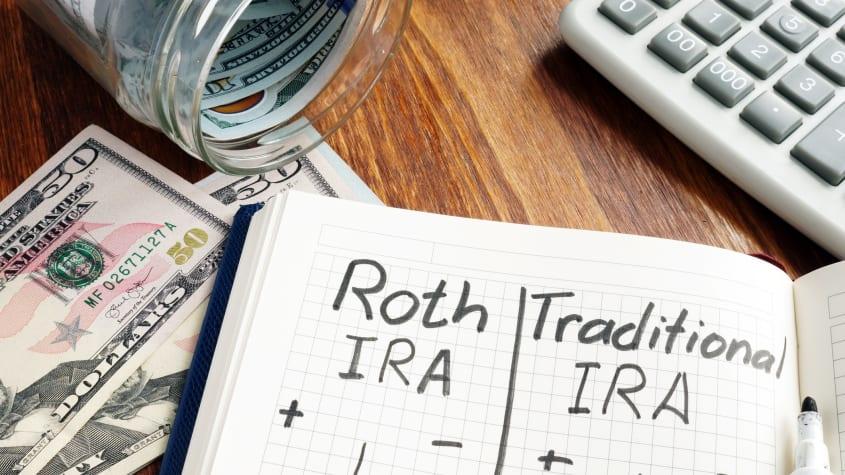If you saved for retirement in a tax-deferred account, you lowered your taxes in the years you contributed pre-tax dollars. When you get into retirement and start to withdraw those funds, the taxes will be due. And once you reach age 72, you’ll be subject to required minimum distributions (RMDs) to ensure that you take ever-increasing amounts out of these accounts so the taxman can get his share.
This lack of control over your income stream in retirement can put you at risk of having to pay taxes on up to 85% of social security, and it may mean you will be subject to the Medicare part B and part D premium surcharge (IRMAA).
What to do? Roth accounts have income limits for contributions while working, but you can roll over an existing tax-deferred 401(k) or IRA into a Roth without limits. Once you pay the taxes, your investment in the Roth can grow tax-free, and there are no taxes on withdrawals.
And because you contribute with after-tax dollars, there are no RMDs. This doesn’t just provide flexibility in managing your income stream so you can avoid social security taxes and Medicare surcharges. It gives you control over your investment plan. You can allocate high-growth assets to your Roth without worrying about tax consequences, and you won’t be forced to liquidate investments in either up or down markets.
Converting to a Roth can be a benefit in estate planning. Since the taxes have already been paid, Roths are not subject to the more stringent requirements and timelines that come with passing on tax-deferred retirement accounts.
You’ll have to pay all those taxes before investing, which can create a temporarily increased income stream, so you’ll want to do some careful planning.
Breaking Down the Rules of the Game
You defer the taxes on traditional retirement accounts in the year in which money is contributed until you withdraw the funds in retirement. Roth IRAs are set up for after-tax contributions, and you’ll have to pay the taxes before converting. But there are no age or income restrictions on Roth conversions, which does provide some flexibility.
When it comes to withdrawals, you must be age 59½ or older, and the Roth account must be at least five years old for withdrawals of the growth in the account to be tax-free. You can withdraw contributions at any time tax-free because you’ve already paid the taxes.
- As noted above, required minimum distributions (RMDs) that begin at age 72 with traditional accounts do not apply to Roth accounts.
The Sweet Spot
There is a sweet spot for a Roth conversion. After retirement, but before you begin to claim social security and before RMDs kick in, your income is likely to be lower, and you may be in a lower tax bracket. Spreading the Roth conversion out over several years in this time frame can lower your total tax liability.
If you can delay social security, you’ll avoid extra income and get an 8% annual increase over the Full Retirement Benefit (FRA) for every year you delay, up to age 70. If you convert after Medicare begins, you’ll need to be careful about how much you convert each year to minimize the IRMAA surcharge.
The Medicare Part B premium surcharge has a two-year look-back, meaning that income from two years prior determines whether the surcharge applies. For example, 2022 premiums are determined by 2020 income. It’s essential to look at the entire financial picture to ensure that the taxable income in the years of the conversion remains below levels that will trigger penalties.
The Right Profile for a Roth Conversion
If you think you’ll be in the same or a higher tax bracket in retirement than you are now, a Roth may be suitable for your retirement plan. Taxes often increase in retirement as deductions decrease, but income from pensions, stock and bond investments, real estate, and other income streams may increase.
And of course, taxes will likely go up over a multi-decade retirement. The Roth conversion allows you to lock in today’s tax rates and avoid any future changes in capital gains taxes.
Who Should Not Deploy a Roth Strategy?
If your income is primarily tax-free, future taxes aren’t a consideration. If you are still working, increasing income with the Roth conversion should likely be avoided – unless you’ve incurred other losses that can create some income smoothing potential.
The Bottom Line
Roth conversions can work very well to create flexibility in retirement income streams and streamline estate planning. Careful deployment can minimize the tax hit during the conversion phase.



